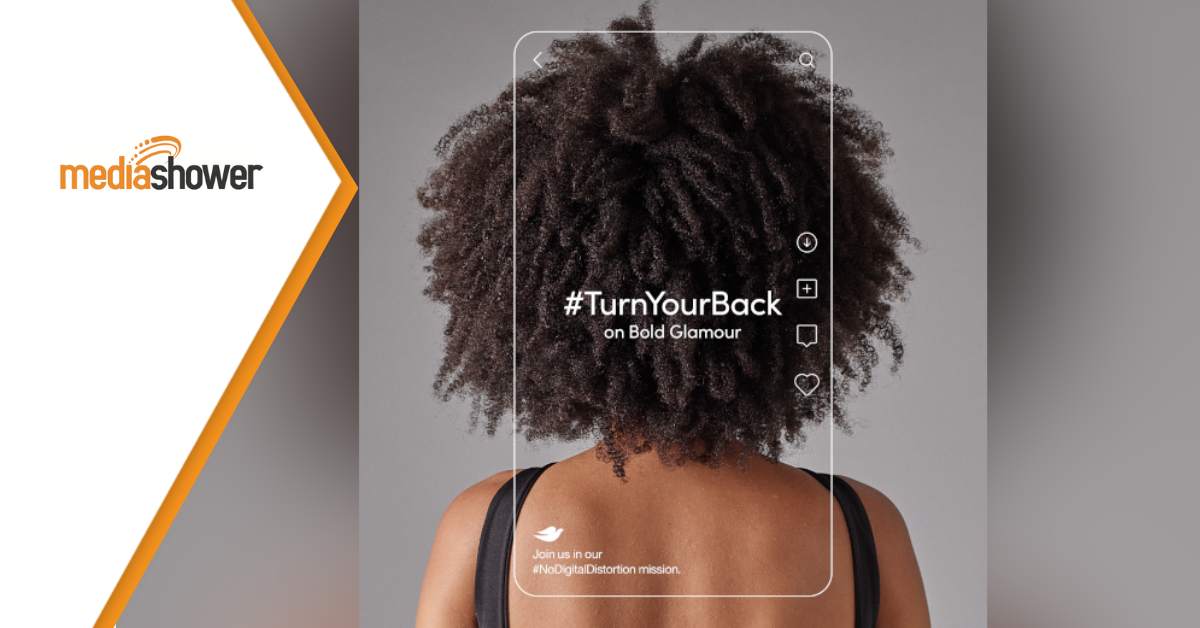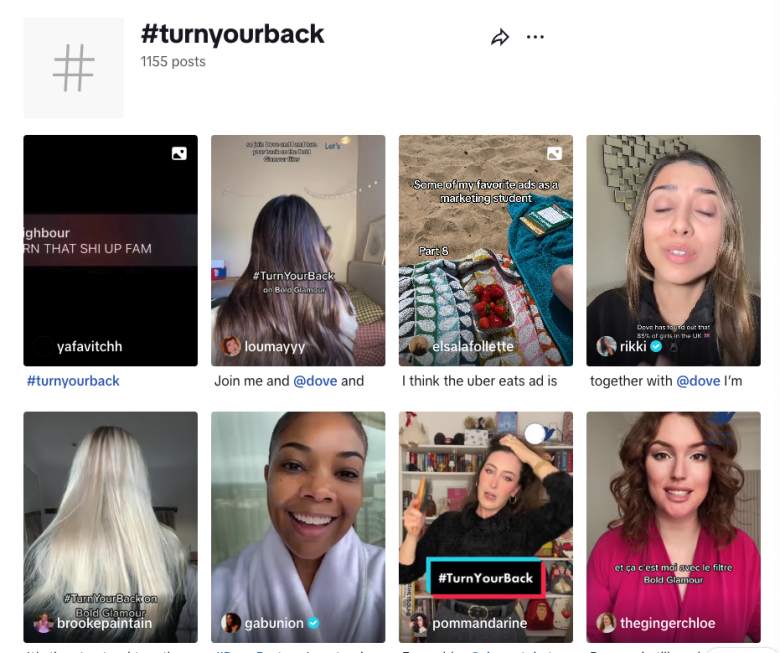
TL;DR: The #TurnYourBack campaign tackled head-on the idea of TikTok facial filters, arguing that it set an unrealistic standard for beauty and ultimately harmed women’s sense of self. The campaign urged women to post images of them turning their backs to their cameras in solidarity against the filters.
So What? This campaign is the latest in a long line of Dove marketing campaigns that tackle issues of women’s beauty standards. Dove’s use of honesty and viral marketing links its brand with these critical causes, endearing it to its audience.
The Dove #TurnYourBack campaign, launched in April 2023, was a social media initiative to address the negative impact of AI-powered photo editing apps on body image and self-esteem. These apps, such as FaceApp, use artificial intelligence to modify users’ photos, often creating unrealistic and idealized versions of their appearance. The campaign encouraged people to “turn their backs” on these apps and embrace their natural beauty.
The Dove #TurnYourBack campaign was directly related to the Bold Glamour filter, a popular beauty filter on TikTok known for its sophisticated and highly realistic alterations to users’ faces. The Bold Glamour filter uses advanced AI to smooth skin, enhance facial features, and create an idealized, often unattainable, version of beauty.

The campaign uses several instances of powerful rhetoric to drive home its message:
- Turning Your Back: Turning their back on the camera showed a rejection of unrealistic beauty standards and the harmful effects of photo editing apps. This powerful visual metaphor made the campaign’s message clear and impactful.
- Ethos and Storytelling: The campaign appealed to the audience’s emotions by sharing personal stories and experiences from influencers, celebrities, and individuals. These stories highlighted the real-life impact of beauty filters on self-esteem and mental health, creating empathy and a personal connection with the audience.
- Community and Social Proof: The involvement of popular influencers and celebrities who turned their backs on beauty filters provided social proof. Seeing respected and admired figures participate encouraged others to join the movement.
- Comparison (Before and After): The campaign often featured before-and-after images showing the stark differences between natural appearances and edited versions. This contrast effectively highlighted the artificiality and unrealistic nature of beauty filters.
The History of Dove Beauty Campaigns
This isn’t the first social awareness campaign that Dove has launched. The brand is well-known for creating marketing and media campaigns that speak directly to women’s issues, often those that affect standards of beauty and impact women’s self-image.
Take, for example, the following campaigns:
- The Campaign for Real Beauty (2004): This groundbreaking campaign aimed to celebrate the natural physical variation embodied by all women and inspire them to have the confidence to be comfortable with themselves.
- Evolution (2006): Dove released the “Evolution” film, which showcased a woman’s transformation through makeup, styling, and extensive Photoshop editing. The film highlighted the unrealistic standards set by media images.
- Real Beauty Sketches (2013): The “Real Beauty Sketches” campaign featured an FBI-trained forensic artist who drew women based on their descriptions and then on descriptions from strangers. The stark differences between the two sketches highlighted how women often see themselves less positively than others.
- My Beauty My Say (2016): Their “My Beauty My Say” campaign focused on women judged on their appearance and how they defied these judgments to achieve their goals.
- #NoDigitalDistortion (2021): Dove reinforced its commitment to authenticity with the #NoDigitalDistortion mark, ensuring that all images in their advertising were free from digital manipulation.
Why Dove’s Marketing Works
Dove’s approach serves a double purpose:
- Identification with Pain Points: For a beauty/cleaning product, one might (mistakenly) think that the customer’s pain points relate to looking good, appearing young, and so on. Dove rightly assumes that the real pain point is the unreal beauty standards placed on women via society, often communicated to them through beauty and healthcare brands.
- Removing Standards as Separation Points: Because Dove tackles these beauty standards relatively head-on, it removes barriers that many women might feel between themselves and others– by identifying shared experiences and removing competitive or standard-setting messages around beauty and self-worth.
This is incredibly effective, in no small part, because it is real and supportive. By taking a stand against the pressures many women feel, they put themselves on the same side as these women, as a brand in their corner.
Following that, Dove is instantly recognizable as an ally rather than a seller of beauty goods. You might argue that simply selling lines of creams, lotions, etc., presents a sort of hypocrisy. Still, the core argument remains intact: that beauty standards are often amplified for women and sold to them via their self-care products.
Marketer’s Takeaway
Authenticity and community are cornerstones of marketing, and Dove has built a rapport with their customers through years of messaging on female beauty standards and empowerment.
What can we take away from this message?
- Connect With Your Audience: When you advertise as a brand, you connect with an audience. You should be able to speak to their needs and position as an ally, not an outsider.
- Honesty Counts: When crafting messages, be honest and creative. Find compelling ways to speak the truth that align your organization with these important concerns.
- Address Tough Conversations: Don’t shy away from topical or challenging conversations. Dove jumps head-first into the world of beauty standards and takes a clear position without compromising their integrity or their mission of selling beauty products.
Media Shower has helped over 500+ clients master their marketing. Try our new platform and say bye-bye to brainstorming.
